Celia Lake's Blog, page 5
April 10, 2024
Idea to Book: Shoemaker’s Wife
Today’s Ideas to Book is about Shoemaker’s Wife. Set in 1920, at the tail end of men returning from the Great War, it’s about figuring out how to pick up – or begin again – and make a new way.
 Returning from the war
Returning from the warWhen I started thinking through the ideas for the Mysterious Arts series, I realised two things. One is that I’d enjoyed writing the arranged marriage to love match romance of Alysoun and Richard in Pastiche. And then that I hadn’t written a romance between people who’d got married fast during the Great War and now had to figure out what they were doing after. Shoemaker’s Wife is the result.
Clara and Owen had good reasons for getting married. Certainly, it meant that Owen’s mother had company and help as she was progressively less well. It meant Clara had a little more stability, even if money was tight. And they did truly fall in love at a time both of them could use a bit of joy.
But a bit of joy isn’t enough for a lasting romance or a good marriage, is it? That’s where the book comes in.
I also wanted to explore what it was like for someone without skills that were valued in the post-War economy to come back. Owen was demobbed very late in the process, as some people were. People who were going back to needed professions had priority. (As, of course, did people who could pull a few strings). That meant that by the time Owen returns in the summer of 1920, jobs are scarce and there aren’t a lot of options. Inflation is about to go up and up and up, and what money they have won’t go far.
It’s even worse for Owen, because of the rise of manufacturing. Albion maintains handcrafted clothing and shoes much longer than the non-magical community, because magical crafting allows for useful options. (Protective magic woven into the garment, charms for the best fit and most comfort, etc.) On the other hand, when money’s tight, and factory-made shoes or ready-to-wear clothes are an option, those might be what you get.
TheatreI’ve got a long-running relationship to the theatre, but I come by it a little oddly. My father was a theatre professor until his death. I grew up occasionally chipping in when he needed a small child in a college production. (Most notably, he combined the three children in Henrik Ibsen’s A Doll’s House into one, and I was the one. It’s a lot easier to manage children in a production if the child is yours and you can schedule accordingly.)
I have a lot of delightful memories of that production. I spent a lot of time backstage with the college students teaching me how to play cards and showing me the wonders of the costume shop. And I adored my main costume for that – a green and red plaid dress and a gloriously embroidered pinafore. It also got it firmly into my head how much of a successful production is on stage, and just how much is what’s going on behind the scenes.
When Owen gets hired by the New Ricardian, he finds that out too.
Theatre history in AlbionI loved getting to explore what a theatre in Trellech might look like in Shoemaker’s Wife, and how they’d go about paying their bills. Cinema’s still coming in. Trellech has a substantial population who might go to the theatre. But they’re not going to want to have the same show running for months at a time. On the other hand, that means constant shifts for the actors, more akin to a repertory schedule.
I also had a tremendous amount of fun (and, erm, effort) figuring out where theatre in Albion diverged from what we know of theatre history. Restoration comedies, for example, are a lot less relevant when you sort of stopped caring about the monarchy so much a couple of centuries earlier. The same thing with many satires – Albion cares about different scandals and problems.
And of course, the play that Albion treats with caution out of Shakepeare’s works would be Midsummer Night’s Dream, not the Scottish play. (See, I said I was a child of the theatre, even typing the name makes me shiver. For those who don’t know, there’s a longstanding superstition about saying the name of that play in a theatre.)
I do hope to come back to more theatre at some point. The New Ricardian (and Owen) do make an appearance in Facets of the Bench (out in August 2024).
Connections in TrellechFinally, I wanted a chance to explore Trellech a bit more. (And again, we’ll have even more Trellech coming in Facets of the Bench.)
Both Owen and Clara grew up there, they’re making their homes there. I loved working through the details of Clara’s work in the apothecary shop. Clara is someone who wants the shop to run smoothly and succeed. But unlike a number of my characters, Clara isn’t skilled magically herself (and hasn’t had the opportunity to do a lot of training). She’s relying on her aunt to make items, and she puts all her energy into the bookkeeping and managing inventory.
Owen also has connections – his apprentice master, to start – but that’s not always as much of a help as he’d like. Instead, he’s got to figure out what’s going on. When he’s directed to Golshan, a whole new set of opportunities unfurl.
I did love the chance to get Golshan, Dilly, and Seth into this book. I’d had a couple of hopeful requests from readers for a bit more of the three of them. (You can find the relevant romance in Casting Nasturtiums, one of the novellas in the Winter’s Charms collection). Shoemaker’s Wife lets us see them about nine to twelve months after the end of that novella. Even better, we get to see the way they’re settling into being usefully helpful to people who could use a hand.
Check out Shoemaker’s Wife if any of this intrigues! And you’ll be seeing a lot more of Griffin in Facets of the Bench out in August 2024.
The post Idea to Book: Shoemaker’s Wife appeared first on Celia Lake.
April 3, 2024
Architecture and magic
One of the things I’ve thought about a lot is the interaction between architecture and magic in Albion.
Now, first, I am by no means a specialist in this sort of thing! But besides having lived in a range of places, I’ve done a little bit of college coursework that covered buildings. I’ve been generally been interested in how spaces adapt and change over time.
 Demesne estates and their architecture
Demesne estates and their architectureOne particular kind of architecture in Albion – and likely the sensible one to begin with – would be the demesne estates. These are the estates that specifically help anchor the land magic for that area. There are multiple layers of magic here, but specific rituals and rites are part of the process. The landed estates we’ve seen include:
Ytene (Geoffrey and Lizzie Carillon’s home in the north of the New Forest)Veritas (the Edgarton home in Kent)Arundel (the Fortier estate in West Sussex).When Geoffrey Carillon returns home in 1922, one of the challenges is that the estate has been neglected. Only the bare minimum has been done magically for several years. There turns out – eventually – to be a reason for that. But several chapters of Ancient Trust (get it by signing up for my newsletter) are about Carillon tending to the magic. He cleans out the local healing well. He ritually sweeps the entire house at the spring equinox. And he takes his expected part in the nearest village’s May Day celebrations.
And The Magic of Four (out in May 2024) has two chapters that take place during the spring equinox, about different aspects of tending the local magic at and near Ytene. (There’s also a chapter just before that which is more about tending the community and people, but which is also about the land at Veritas.)
We’ll have more about Arundel coming in due course, both in the Mysterious Fields trilogy (out at the end of 2024) and Ursula Fortier’s romance. That one’s set in 1947 and is in part about Ursula becoming Heir to that estate, and all that means. I’m writing it starting in August, it’ll be out in 2025.
BuildingsOne of the things I love thinking through is how buildings are different with magic.
Sometimes, it’s about charms placed on the building once it’s constructed. Four Walls and a Heart has an example of that. That home is what spurs Gil Oxley to retrain and focus on architectural magic. There, it’s about making a space that is comforting after loss, even if other people think lingering in that space doesn’t make sense.
But it’s also about creating spaces that sing, magically, as it were. I continue to wist – some days quite a lot – after the magical baths at Veritas. (They make a particular appearance in Pastiche and Upon A Summer’s Day). Based on the original Roman design of the house, they rely on a hypocaust system and magical heating to produce more than sufficient hot water, steam, and varied pools for bathing and soaking and rinsing.
Designing for a purposeOther spaces are designed for purpose. An alchemy lab – or a space used as one – needs ventilation and stability. You don’t want dangerous ingredients getting jostled, or for gasses to build up. Lewis has given quite a lot of thought to this in Perfect Accord, using a space that wasn’t originally designed as a lab.
Duelling salles also have specific demands. Isembard tends the salle at Schola several times during Eclipse. All salles have enchantments to absorb and deflect magic in safe ways, but Schola’s is particularly so. That’s because so many of the people using it are still very new to the art of magical duelling, and they need to be safe while they learn. Some materia is raked and mixed into the dirt floor, which is re-enchanted and charmed at regular intervals. Some is built into the wood. Other protections are checked regularly and renewed when needed.
And in coming attractions, Facets of the Bench is dealing with, among of things, the magical structure of the Courts.
All architectural magic is manipulativeThe last piece is an argument more than one character has made in my books – that all architectural magic is fundamentally manipulative.
Thesan comments on it when it comes to the enchantments against pregnancy in the seven Houses at Schola. In that case, there’s a charm on the pipes that feed those houses that provides a contraceptive effect. Heads of House could choose to avoid it, if they wanted, but the students are drinking that water routinely in tea while they’re studying. (The pipes in the Keep and for the section of the curtain wall that houses the library, rooms for staff without rooms elsewhere, and the Head’s offices are handled differently.)
Gil, of course, also has opinions about this. He’s spent most of his adult life dealing with architectural magics. His job is largely figuring out what’s already inherent in the building and then figuring out how to coax, adapt, or reset that to suit the current needs of the family, the house, and the property overall. And some of that’s a little manipulative.
Think about creating a scene for a party, or the tricks real estate agents use. (Think of the smell of bread baking, vanilla, all the smells that read to us as comfort and home). Or what it’s like walking into a room for a winter party, the mix of evergreen, spices, maybe some citrus. It’s manipulative in a way, but it’s a way we’re generally pretty delighted to go along with.
Expanding the ideaI think about this one a lot because my current job is in a building (on a campus) that was designed to be inspiring to the staff and students and others who were there. I appreciate this every day I walk into the office. It’s in 1910s Neo-Gothic style, with big windows, lots of light, and designs specific to the uses of the buildings.
Obviously, there are also a lot of ways this one can go wrong, or be neglected, but the interplay between design, function, and decoration is never going to stop being of interest to me.
The post Architecture and magic appeared first on Celia Lake.
March 27, 2024
Idea to Book: Bound for Perdition
I’m amused that this Idea to Book post, about a book in 1917, comes right after the one for Three Graces, the other end of that story. Welcome to the post about Bound for Perdition, a romance about book binding, the early steps in a fatal mystery, and the consequences of new technologies.
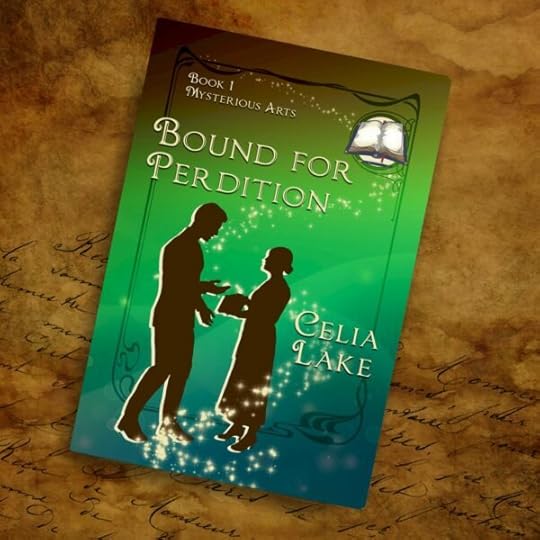 The arts
The artsThe first thing I wanted to do was a series about magic and various fine and applied arts. This series explores a wide range, and I’m fairly sure what all of them will be now, even though I’m only just about to start writing book 5 in the series in May. For the record, we have:
Bound for Perdition : Book binding. Shoemaker’s Wife : Shoemaking and theatre, with a side of apothecary work. Perfect Accord : Alchemical perfumes.Facets of the Bench : Jet carving, jewellery, and talismans (coming in August).Weaving : this is the one I’m starting to write in May 2024Singing, definitely including a nightclub.Brewing and use of plants and herbs, alchemical and otherwise.The journalsThe first part of why I wanted to write this book was the journals. The magical journals were invented during the Great War in Albion. Initially, thes a method of providing far more accurate and speedy communication in the magical community. They were available in limited quantities through during the War. After the War, they were more generally available – assuming you could pay for them.
The basic idea, as explored in Bound for Perdition, is that the bound journals are linked magically, allowing you to flow text in an ongoing conversation with different people. Each book can maintain a number of conversations, just under two hundred in a given journal. Lengthy conversations do require additional magic to index and bookmark particular points. Otherwise you lose track of where that particular part of the conversation was.
(If this feels rather like trying to find a conversation you half remember on Tumblr, Discord, the former Twitter, or other social media, well, yes. I’ve been in various online spaces for a long time now. This is a problem that has frustrated me for all that time. Even if I do now have some tools to manage it in a way that works for my brain.)
The implications of the journalsOne key issue with the journals is that they are time-intensive and expensive to produce. Once it gets into the 1920s, a journal is roughly the same cost range a newer automobile would be for us. It’s certainly something a number of people own. But for most of us it’s absolutely not a casual purchase, and lots people won’t have. In the late 20s, the costs start coming down. By the mid-30s, the cost is more like a higher end computer. That’s a lot more reasonable for, say, an employer to provide to key staff.
Some professions make them fairly routine quite quickly. The Guard, for example, has shared journals that link the various places Guards are stationed around Albion, and connecting to someone who maintains a central journal, as a method of getting help out quickly when needed. In contrast, there are fewer at the Temple of Healing in the late teens and through the twenties. There, it’s easier and cheaper to have someone run a message by hand to someone else in the same complex of buildings.
Related toolsThere are some alternatives. In The Magic of Four, out in May, Leo Fortier explicitly doesn’t have a journal yet. (He’s 14, and explains one of the specific reasons he hasn’t wanted one.) Instead, his family has a set of blood-linked journals that allow him to communicate with a small number of people, the same way as a journal. This is a tad awkward if you want to communicate with different sets of people. But for that use, it works pretty well for them.
Finally, journals have some security measures, but they’re not perfect. For things that absolutely need privacy, a note (with charms to confirm the sender and only open for the intended recipient) are still safer.
The art of bookbindingMore than all of these details, though, I really wanted to explore the joys and delight of the physicality of book binding. As the first book in the Mysterious Arts series, it seemed like a wonderful art to enjoy.
Some of my research involved getting a book-binding kit, in fact. I discovered I loved sewing signatures together rather a lot. However, I also learned that my usual dexterity levels aren’t great for some of the more delicate bits of gluing things in place.
Temple and Delphina CarillonAs I talked about in Three Graces, that book is one end of a longstanding mystery. Bound for Perdition is the first piece of that mystery. While the actual cause of Temple and Delphina’s deaths doesn’t come up directly here, the events are critical to that later arc.
Temple has been working on secret projects during the way with a number of people. Some of them are, shall we say, better for him than others. The research during Bound for Perdition isn’t particularly risky – but he’s getting into that territory. That’s especially true as he continues to worry about his younger brother and the ongoing War.
I did enjoy getting the chance to see both of them – and especially Delphina – on page, and getting more of a sense of their personalities.
The consequences of new technologyFinally, this is a book about the consequences of new technology. Technological progress often accelerates in wartime (or when war is imminent). That’s partly because there are different kinds of pressures, but also because there are often shifts in resources. If something could give a significant tactical advantage – and real time communication absolutely counts – it’s worth seeing if you can make that happen.
That explains both the pressure Lynet is under – and the way she’s undermined, in terms of access to needed materia, resources, even staff. One of the things I thought about a lot in writing and editing was who would want journals to be available, and who would want to block them (subtly, perhaps). Obviously, while there’s an advantage, having accurate information about the tremendous losses at the front would be something the people responsible for them would want to hide. And it’s also true that totally free access to communication from active fighting presents a number of security challenges.
(For the curious, the way Albion handles that in the Second World War is done by explicit oaths about what can and can’t be communicated. You can see some of the variations on this in Illusion of a Boar. They use journals for some things, notes for others. Some people can’t keep their journal available because they’re posted with non-magical folks who would notice.)
Curious?You can get a copy of Bound for Perdition from your favourite source. It’s a great place to jump into my books. And if you like Reggie, he makes a brief appearance in Three Graces.
The post Idea to Book: Bound for Perdition appeared first on Celia Lake.
March 20, 2024
Idea to Book: Three Graces
Today’s instalment of Idea To Book is about Three Graces, a novella that answers a longstanding mystery. Of course, it takes place in the summer after the end of the Second World War in Europe, so there are a number of other things going on as well.
 Longstanding mystery
Longstanding mysteryThe first thing about this novella is that it’s a resolution to a longstanding mystery. (You can see the full list of books relating to the Carillon family at the end of the post.)
Geoffrey Carillon knew in 1922 that his older brother Temple and his brother’s wife, Delphina, died in mysterious circumstances. There was not enough evidence to do anything legally. Albion’s Council had their hands all over the problem. Geoffrey had to let it drop, for lack of further information. Ancient Trust covers this particular part of the mystery.
In 1935, he got another source: Alexander Landry, a member of the Council who had not been involved. Alexander was able to learn more about the reason the Council acted as it did, but not the underlying cause. Alexander shares this with Geoffrey in Best Foot Forward. In 1940, Geoffrey asked for additional help (that’s in Upon A Summer’s Day.)
Back during the Great War, Temple Carillon was involved in a series of secret projects for Albion’s Ministry. Some of them are hinted at in Bound for Perdition, back in 1917, about the project creating the magical journals during the War. Temple Carillon and others are working in the same building.
Finally, in Three Graces, with the end of the war freeing up time and resources, three women are able to lend a hand to help with the problem.
Three women with different skillsOne thing I love about Three Graces is getting to see three of my favourite women bring their particular skills to this problem.
Lizzie Carillon has both knowledge of the family, via Geoffrey, and she brings her own experience with solving mysteries, investigating, and doing a bit of espionage work. Alysoun Edgarton has been a consultant with the Guard for decades at this point, and she also knows what additional tools might bring results. And, as becomes relevant, what evidence they need to move forward. And Thesan Wain, astronomy professor, has skills in seeing patterns in what you can’t see, figuring out what’s there by the pull of gravity around it.
(If you want to read their romances, Lizzie’s is Goblin Fruit, Alysoun’s is Pastiche, and Thesan’s is Eclipse.)
They turn out to need all those skills – and a few more – to solve the mystery. The three women have different roles in the larger social community, and Lizzie’s able to use that to get more information on a key person. Thesan’s friendly and approachable – with a brother and adopted brother who know a whole lot of different people. And Alysoun can help balance both set of skills out, and set up what’s needed when they have enough cause to take action.
The aftermath of the warA friend, also one of my readers, made a comment on the Discord about really enjoying seeing what’s going on here, when many authors would focus on the visible aftermath of the war in Europe. She was glad I hadn’t done that, and that we get to see a different sort of story.
It is true, however, that many of the men – and a few of the women – are busy with other things. Mostly, I’m not terribly interested in writing those details. Some of it is dealing with horrific historical events. A lot of it is plain hard work trying to begin to put things into some sort of working order. A lot of it would just be tedious to read. What they’re doing – untangling dangerous magic left after the war – is absolutely necessary, requiring tremendous skill and courage. But that doesn’t make for a very good book.
(You can find a little bit more about what Gabe, Isobel, Claudio, Orion, Hypatia, and Cammie are up to in the As the Ground Shifts extra, but mostly they’re talking about other topics than their direct daily work.)
This novella is, however, about a question I keep coming back to in my writing. Once the particularly obvious hard thing is over with – a war, an illness, a personal tragedy – what happens next? How do we keep going forward, hopefully in some good way? What does it mean to pick ourselves up and try again?
In Three Graces , the problem they’re solving isn’t urgent, exactly. Temple and Delphina have been dead for two decades. But it turns out that solving that problem helps keep other people safer, it helps deal with a few more wrongs. And that’s a good way to move forward into the post-war period, isn’t it?
More about the CarillonsWant more about the Carillon family? Here are all the books so far.
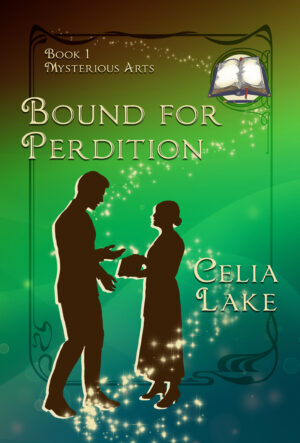 Bound for Perdition
Bound for Perdition
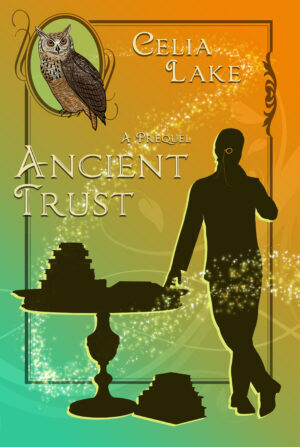 Ancient Trust
Ancient Trust
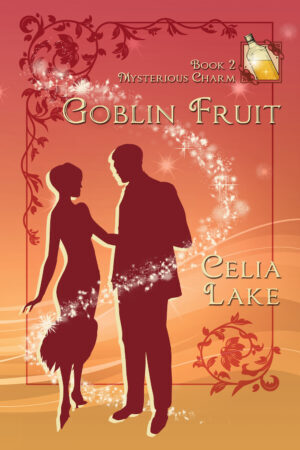 Goblin Fruit
Goblin Fruit
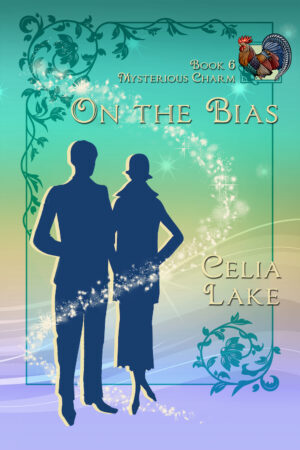 On The Bias
On The Bias
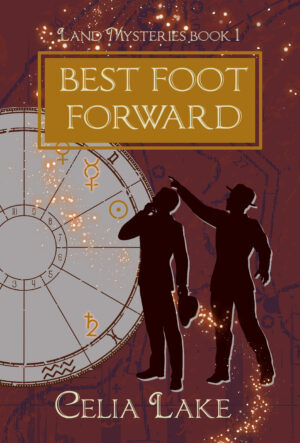 Best Foot Forward
Best Foot Forward
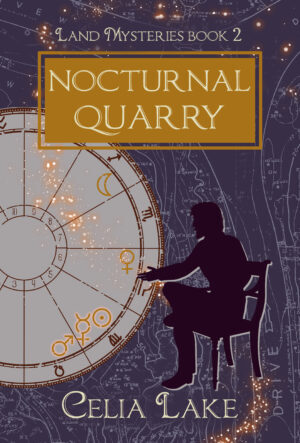 Nocturnal Quarry
Nocturnal Quarry
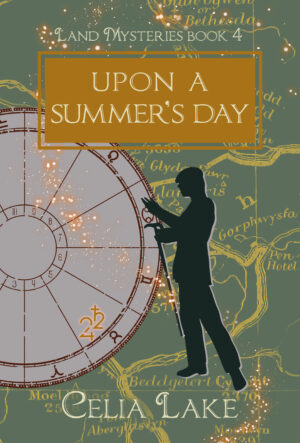 Upon A Summer's Day
Upon A Summer's Day
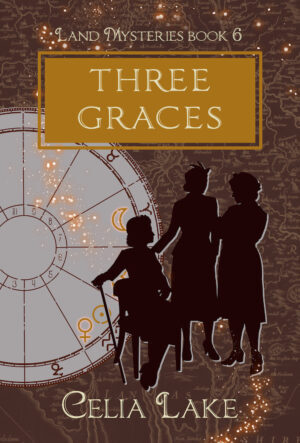 Three GracesCOMING SOON
Three GracesCOMING SOON
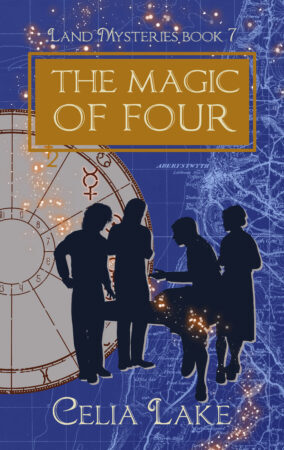 The Magic of Four
The Magic of FourThe post Idea to Book: Three Graces appeared first on Celia Lake.
March 13, 2024
In Character : Richard Edgarton
Welcome to the first in a series posts focusing on a specific character. We’re starting with Richard Edgarton, who’s appeared in a number of books over his life. He’s married to Alysoun Edgarton, and the father of Gabriel (Gabe) Edgarton and Charlotte Edgarton Wright, as well as grandfather to their children. He’s also been Lord of the land, a Captain in the Guard, and a magistrate for most of his life.
You can find the complete list of books Richard’s appeared in on his page on my authorial wiki, as well as the arc of books that deal with the Edgartons as a family.
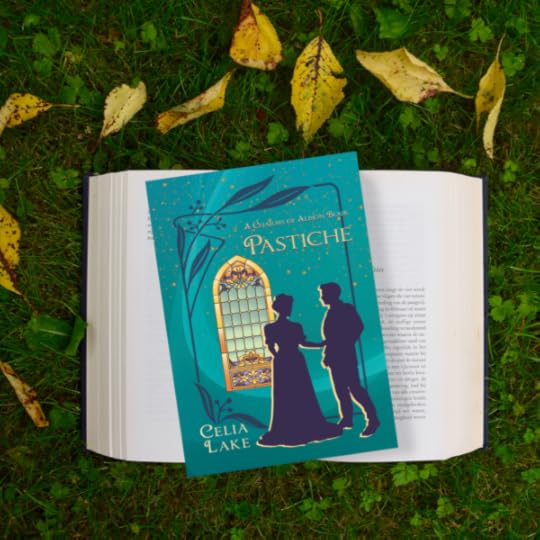 In the beginning
In the beginningIn internal chronology, Richard first gets a mention in the final chapter of Four Walls and a Heart. There, it’s 1890, and Magni Torham has come home after a long day. He’s the Duelling Master for Albion’s Guard, responsible for training all the apprentices in necessary skills. His partner, Gil Oxley, wants ot know how it went, and it becomes clear that Magni’s planning to take Richard as his particular apprentice in the Guard.
I wrote this novella last in terms of the writing chronology (of the books that deal with Richard) which meant I could seed this in:
Richard as a young adultMagni let out a long breath. “I look at what we have. He has expectations about what marriage looks like, I’m sure. The need for an heir. But I looked at him, and I saw – what we were like, at that age. Wanting to live up to things. Be the right shape for them. And I want him to have a smoother road of figuring it out, whatever that looks like for him. The hell of it is, I think maybe I can. Maybe he can. You know how it is, when you duel someone, and you match them. Not skill, that’s different, but the way you go about the thing?”
“Well enough.” Gil’s fingers pulled away, just so he could trace fingers up Magni’s furry arm. “You want someone to be happy like we’re happy, whatever that is for him. I think, Mag, that may be the most romantic thing you’ve ever said.” Four Walls and A Heart – epilogue
Four Walls and A Heart : Epilogue
Of course, it’s not that simple. When we see Richard in 1906, he’s in a cordial marriage with Alysoun, with two young children. But he and his wife are amiable, not in love. Over the course of Pastiche, they figure out how to solve that puzzle – and several more along the way.
What comes out here is Richard’s underlying strength. I think of him as the perfect exemplar of an English oak. Strong, harder, resilient, and absolutely committed to what he’s doing. In Pastiche, he’s already taken on even more responsibility as a Captain of the Guard, as Lord of the land. During the book, he takes on a third, as a magistrate. The questions he asks himself are always about how to do the right thing, but not just the right thing, the honourable and decent thing.
MentorFrom there, Richard comes into his own. By the end of the book, he’s on an arc to handle more delicate investigations. We see him juggling multiple considerations in the background of Wards of the Roses. He wants the problem solved, he trusts Giles Lefton to be able to approach it sensibly.
But he also hopes that there’s a way for Kate Davies to find a place for herself. She does, successfully. The way Giles, Richard, and Alysoun all act as mentors to Kate in their varied ways is also a key aspect of the book. Knowledge shared is a great gift.
FatherAs we come into the 1920s, Richard’s career is steady, but now he’s the father of two adult children. In Gabe’s romance (The Fossil Door) and Charlotte’s (Perfect Accord), he’s still working on finding some of that balance.
How much worrying is appropriate, when you have children who will go investigate things that need investigating? Here, Richard is deeply, visibly proud of his children, and not afraid to tell them so. He’s also sure enough of himself – and of them – that he trusts them when they tell him what they need.
Richard’s further mentoringHe’s also acting as a mentor to someone else. Geoffrey Carillon returns from lengthy travel abroad in February of 1922. In Ancient Trust (get a copy by signing up for my newsletter, being on our Discord, or being a patron on Patreon), Richard is one of the people who helps Carillon find his feet in Albion between the wars. Carillon speaks about it, both in Ancient Trust and during the Land Mysteries books, that Richard is the person he’s looked to for a model of both how to be a Lord and how to parent.
World War 2As we move into the Second World War, Richard’s focus is absolutely on the needs of the war, including how to keep people as safe as possible during the Blitz. He’s worried for Gabe – and Rathna, Richard’s daughter-in-law – in particular, because they have taken on the family desire to solve problems and improve the world.
In the two books particularly focused on this, Old As The Hills and Upon A Summer’s Day, one of the things I love is seeing Richard’s responses to Gabe. They think very differently. Richard is neurotypical in so many ways – and Gabe is absolutely not. Richard is often baffled by his clever, quick, impulsive son. But he also sees himself there, especially how Richard is when he’s duelling, trusting the moment when everything comes together.
This is one of my favourite examples of that: Richard has just asked how Gabe got from the topic they’re supposed to be discussing to making colours with Gabe’s daughter Avigail for the family Holi celebration in the spring.
That got Gabe throwing his head back, a long and loud laugh. “Hemington’s Fifth, one of the scribal errors from Erasmus Minor, the implications for fixatives, that thing Sorcha taught us about blaeberries, the way shed snake skin reacts in potions work, and stumbling into a patch of blackberries?”
Upon A Summer’s Day
He laid out the chain almost casually. Long experience of his son had taught Richard how to follow it once it was laid out. But he would not have made half those jumps, even allowing for the fact Gabe had a vast store of obscure magical lore in his head that Richard did not.
What I love about Richard here is his simultaneous bafflement and acceptance of how Gabe works. He’s able to hold both those things in his head, and delight in them.
Showing Richard LoveAnd on Gabe’s side, there’s a little thing I don’t know if readers have noticed consciously. Gabe is not nearly as formal as his father unless it’s required. But he understands that there’s something in Richard that appreciates that structure. Gabe will cheerfully refer to his father as ‘sir’ in certain conversations. It’s a loving, affectionate, perhaps slightly teasing recognition that he knows his father likes that tiny reminder of the order of his personal universe.
(We’ll have more about Gabe in due course, naturally.)
I do expect we’ll see a little bit more of Richard in some upcoming books (and there are some small tidbits about Richard in his last years of Schola to come as part of the Mysterious Fields trilogy).
Do you have some favourite bit of Richard? Drop me a note, and I’ll collect them and add them to the post.
The post In Character : Richard Edgarton appeared first on Celia Lake.
March 6, 2024
Idea to Book: Illusion of a Boar
It’s time for the Ideas to Book for Illusion of a Boar. There’s so much I love about this book, both these four men and women and what it says about the Albion of the Second World War.
(This does contain a spoiler about Cammie in the last section…)
 Two sets of chosen siblings
Two sets of chosen siblingsThe first thing I knew I wanted to do in this book was bring two sets of people who were close with each other together – and have something new happen. That’s actually one of my goals for the Land Mysteries series.
There are certainly books with romances. But I wanted a series that had just as much about all the other relationships in our lives. Geoffrey and Alexander are working partners before they’re anything else. Gabe and Rathna have been married nearly two decades. They’re still very much in love, but not the first flush of romance.
We’ve a somewhat more typical romance in Illusion of a Boar. But this book is also about choosing who’s family and making new trusted friends. Three Graces has three long-time friends working closely together. And The Magic of Four we’ve got four students who know and like each other. They come into a different constellation over the course of the year.
Claudio and Orion have been friends since they were at Schola. To be specific, the 1924-1925 school year, when Eclipse takes place. They move from being around each other a lot to actually being friends. Now they’re in their 30s, they’ve lived – and risked – a lot more. As Claudio says early in Illusion of a Boar, it’s a relief to him that there will be someone read in on the same secrecy. Whatever comes, they can talk about it with each other. And of course Claudio’s been worried about his best friend, who’s just had the worst six months or so of his life.
Cammie and Hypatia are just as close, but they got there differently. Cammie’s mother fell in love with – and then married – Hypatia’s older brother. But they’re only two years apart in age, they have a lot in common. It’s ridiculous to pretend to be aunt and niece. Hypatia knows most all of Cammie’s secrets – anything not related to her cryptography work, anyway. And Cammie is ready to go for anyone who doesn’t treat her sister well.
The boar referencesOnce I had four characters, I needed a plot. Or to be specific, an event in the Second World War that fit what I needed. Four people, isolated from those around them for some reason, and forced to work closely together.
I did some rummaging through various events in 1943 and 1944, looking at which parts of the British Army were involved in what. When I started reading about Operation Fortitude, the deception operations that were planned in the run up to D-Day and the Normandy Landings, I got interested.
What sealed it for me, though, was that they were pretending it was the Fourth Army that was moving as part of the deception. As Orion notes, in the Great War, the Fourth Army had a badge of a white boar, the same as Richard III. (The last king anyone in Albion has cared a tremendous amount about, for various reasons.)
Between that and Orion’s actual inclinations, well, there we were, I had my basic plot.
I will say that some of the reading about Operation Fortitude is some of the most hilarious and ridiculous history, set against a backdrop of war and imminent death. There are some completely over the top stories from the various deceptions. And the whole thing was held together by people who knew how to talk it up when necessary to get resources, and who could roll with all sorts of unexpected changes. Adding a magical arm fits surprisingly well.
Different models of neurodiversityOne last thing I love about this book is that there are three or four different models of neurodiversity. (Claudio’s the neurotypical one here.)
I sent Kiya chapter 7. Not too long after, I got a comment of “You do realise Orion is autistic, right?” More specifically, a particular kind of autistic. Unfortunately for him, he was born into the sort of family that expects people to pick up on and act on subtle social cues.
Once he and Claudio get to be good friends, he can rely on Claudio to explain things to him. But it explains why he’s so hurt – in ways he has no words for – for his ex-wife’s betrayal. It doesn’t fit what he understands about the world, and he can’t make it make sense.
The conversation he has with Thesan and Isembard, in the middle of the book, is a great example of how people can support each other. Thesan’s also quite arguably autistic, but in a way that’s different from Orion. (And Hypatia is also much closer to Thesan’s mode.)
More helpfully, though, she’s had time and reason to work through how to handle some of the situations Orion doesn’t understand. And she’s had other people to help her – her apprentice mistress, then Isembard. (Both of whom come from families who do this sort of thing all the time, and who are naturally gifted at some of it.)
And Cammie? Well, it depends on how you read her. I’d argue that she’s a perfectly neurotypical stoat.
What’s next for these four?If you haven’t read Three Graces, the end of that novella has a bit more about Orion’s arc in specific. I do plan to revisit the four of them. Claudio is finally going to get a proper romance in 1950. I’ve got a few things I need to write to set up the plot parts of that, but I promise it’s coming. (Expected publication mid-2026).
Until then, As The Ground Shifts, the set of extras for Illusion of a Boar and Three Graces also has a bit more about all four, especially Claudio and Orion.
The post Idea to Book: Illusion of a Boar appeared first on Celia Lake.
February 28, 2024
Idea to Book: Upon A Summer’s Day
Today’s Idea to Book post is about Upon A Summer’s Day, which forms a tight duology with Old As The Hills. As I mentioned in last week’s Idea to Book post about Old As The Hills, that book ends in the early afternoon of August 12th and Upon A Summer’s Day picks up early that evening.
In that last chapter, Gabriel Edgarton has been asked a question. Upon A Summer’s Day is his answer – and more importantly and interestingly – exactly how he goes about answering it. With Gabe, it’s always the process, not just the answer.
Contains spoilers.
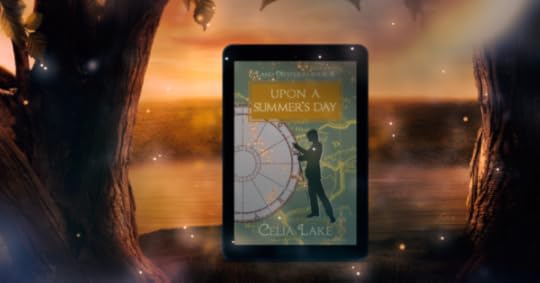 Gabe himself
Gabe himselfIt’s probably no secret that I love Gabe and his family a great deal. I’ve talked about Gabe as a particular kind of neurodiversity wish fulfilment. He’s what many of us wish we’d had when we were younger. That’d be parents who may or may not understand how our minds work, but who do figure out how to support those interests and patterns without crushing the other parts.
(A lot of people I know – me included – have parents who were good at some of this, not so good at other parts. In my case, there was certainly a fair bit of pressure to mask and conform to social expectations by other parts of our lives, like school. I mostly was quick enough about my work that it didn’t bother me too much, until I got to a point where the work was both challenging and interesting. But there are a couple of bits from my personal history that stick out, decades later.)
Upon A Summer’s Day has a glorious example (in chapter 13) of Richard being amiably baffled, yet again, by how Gabe chains thoughts together. In the midst of more complex topics, Gabe mentions he’s going to work on colours for the powders used for their Holi celebrations with his daughter Avigail. Richard, his father, asks what made him think of that for the day.
Gabe chuckled. “Something from last night, Papa.”
“How did you get from your challenge to colours for Holi?” Richard had to ask, and for several reasons.
That got Gabe throwing his head back, a long and loud laugh. “Hemington’s Fifth, one of the scribal errors from Erasmus Minor, the implications for fixatives, that thing Sorcha taught us about blaeberries, the way shed snake skin reacts in potions work, and stumbling into a patch of blackberries?” He laid out the chain almost casually. Long experience of his son had taught Richard how to follow it once it was laid out. But he would not have made half those jumps, even allowing for the fact Gabe had a vast store of obscure magical lore in his head that Richard did not.
Upon A Summer’s Day, chapter 13
And of course, there are other examples, all through the book. Chapter 3 has an extended example of all the ways that Gabe is entirely himself, and utterly splendid when he’s given scope. Alexander, the point of view in that chapter, has enough information to realise about half of what Gabe is doing and why, and even he can’t quite sort out what’s coming until it happens. It was also a delight to show how much Gabe is the child of his parents. He’s got both Alysoun’s thorough analysis and Richard’s duelling ability, even if this is all with words.
A danceIt was tempting for about a second to write this book solely from Gabe’s point of view. But that, of course, would be entirely incomplete. For one thing, this book – as is true with the series as a whole – is about the wide range of relationships in our lives. Here, in one volume, we get Gabe and Rathna, as a married couple. But we also get Gabe’s parents, and then Alexander (friend, then formally a colleague), and Geoffrey. They have relationships to each other, but also to the land magic in other ways than Gabe and his parents.
And it is fundamentally a dance.
The book is named for one, first of all. I was able to structure the book based on the dance, couple by couple, with a progression through the sequence. Not only do we get each person’s perspective in a different space, it also let me put the heart of the book, Gabe’s challenge, in the right place proportionately.
Of course, there are other patterns here. Geoffrey and Gabe’s matched fight – never a duel – is a delight to all involved. That’s another thing about this book, there are a lot of people being very good at what they do, excelling. The tensions in this book, again, come from how the thing will be done, not whether the success will happen. It’s a dance, not combat, in the end.
A council challengeAnd finally, this book is the first time I’d written a Council challenge out in detail. As I write this blog post, I’ve written out extras that touch on four others. They include Cyrus and Alexander in more detail, Mabyn and Garin more briefly. I have notes for a fifth related to the Mysterious Fields trilogy that I’ll be writing soon. And there will probably be a couple of others down the road.
But writing complex initiatory experiences, especially highly individual ones, is a definite writing challenge. Figuring out what would happen in this challenge took a lot of thought. How Gabe responds was even trickier. After all, Gabe – unlike basically anyone else who’s challenged for the Council in recent memory – spends his days solving just those kinds of puzzles. Of course the Lady makes it explicit in his challenge. She’s testing how he reacts, not whether he can succeed.
Those are just three things of Upon A Summer’s Day. We will get to see yet another iteration of Edgarton children growing into themselves in The Magic of Four. That’s coming out in May 2024. Avigail Edgarton, Gabe and Rathna’s youngest, is one of the POV characters.
The post Idea to Book: Upon A Summer’s Day appeared first on Celia Lake.
February 21, 2024
Ideas To Book: Old As The Hills
Welcome to the Idea to Book post for Old As The Hills. There are quite a few unusual things about this book, and I’m excited to get to talk about them. First and perhaps most importantly, this is a book centred on two people in a longterm and loving marriage. It’s not a new romance. Second, it’s one of my books that writes closest to historical events. And third, it’s in conversation with a whole line of esoteric history. That means writing about that period in a way I haven’t done before.
Old As The Hills takes place in the first year of the Second World War, from November 1939 through August of 1940. It’s immediately followed by Upon A Summer’s Day, which picks up that evening and carries through December 1940.
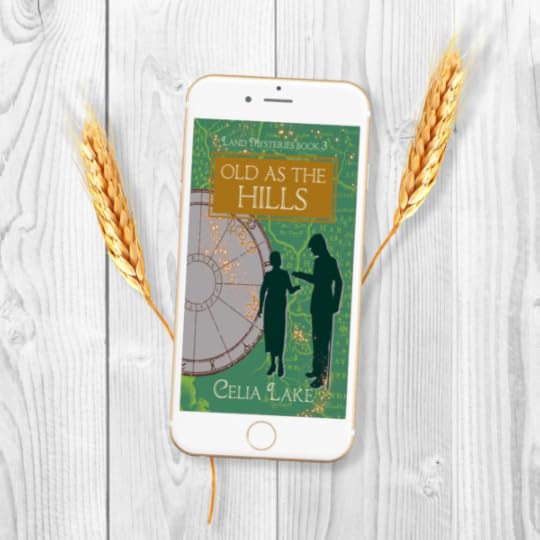 A Loving Marriage
A Loving MarriageOne new thing for me with this book was having the point of view characters not be in a new romance. They’re a happy married couple, established in their marriage. Gabe and Rathna have three children. And they’ve got good relationships with Gabe’s family (and with those of Rathna’s she’s found).
Gabe in The Fossil Door – their romance back in 1922 – is still so terribly young. Rathna is older. But while she’s mastered her chosen profession, she still has a lot to learn about the world. I wanted to spend time with them as the mature, accomplished adults they’ve both grown into. They’re people who understand what they’re good at, but both of them want to stretch and expand those limits.
I really wanted to write more about what Gabe was like once he was a fully mature adult, at the height of his powers. He has more to learn about the world – Gabe always does – but he has an excellent set of skills. And he brings those into new challenges, in the next book, too. Seeing how Rathna balances him – and what they’re both like when they’re apart – is the core of this book in many ways.
Not just romanceAnother part of this was getting to write them both in close relationships (at least by the end of the book) with their apprentices. Both Gabe and Rathna are committed to passing on what they know to other people. But they also want to figure out how those apprentices can make it their own. As someone who is a librarian and sometimes also a teacher, I wanted to get a bit of that on the page. The wartime circumstances certainly give scope for a lot of learning!
It’s about the many ways we relate to the people around us, the ones we lean on. And it – and Upon A Summer’s Day – are about the different shapes that can take.
Writing closer to historyOnce I’d decided to write into the second World War, obviously, thinking about how that affected the plot and the characters was a big part of that. Land Mysteries as a series has a larger arc about the land magic and the war. When I was planning, I found myself really wanted to spend more time with Gabe and Rathna.
They’re both deeply committed to doing what they can for the war effort, whatever way they can. Especially when it comes to saving a few more lives. There’s Rathna’s work in this book, to get just a few more people away from the ever expanding borders of Germany. Gabe trying to figure out how to bring together dozens of different shards of information and magic to do something helpful is another.
This is one of the rare books where I did an incredibly detailed timeline before I started writing. It’s a book where I had to. It includes key historical events like the invasion of the Low Countries, the fall of Paris, and the retreat from Dunkirk. Those have a big impact on the plot and on the lives of other characters, obviously.
(And then I had to figure out how to get Rathna back home. That involved a lot more peering at castle diagrams, timelines, and figuring out what different locations were used for during WW2 than I entirely want to think about.)
A Conversation with Esoteric HistoryIn many ways, this book is in conversation with Katherine Kurtz’s novel Lammas Night (published in 1983). It takes on the question of the period from May to August 1940, and the question of sacrifice. I’ve read it many times, but when I was thinking about writing Old As The Hills, I found myself wanting different answers to those questions. Or rather different questions about what sacrifice is and isn’t.
(Also contrasting this with some choices Livia makes during this book, and the impact that has on this world.)
As I mention in the author’s notes, the actual history of this time period on the esoteric side is still complex to sort out decades later. That’s due to a combination of secrecy and lost connections. And people almost certainly telling some tall tales in a few places.
But at the core of it is this, which is documented truth: esotericists, occultists, and others who thought beyond the physical also were active in seeking what protection they could for the country. Whatever form that might take.
Of course, that did lead to my all time favourite start of a chapter ever. It’s is drawn from an esoteric working the week before the chapter takes place. (Gabe does explain himself a few paragraphs later.)
“Oh, merciful gods. You don’t have rampaging angels with swords stalking about the place.” Gabe let out a breath from the doorway of Schola’s salle. He hadn’t realised how much metaphysical aggravation he’d been carrying around.
Gabe, Old As the Hills, chapter 10 (February 5, 1940)
If all this intrigues, check out Old As The Hills.
The post Ideas To Book: Old As The Hills appeared first on Celia Lake.
February 14, 2024
Typos are eternal but fixable
I’ve had a few questions recently about if I want to hear about typos or small formatting errors. Yes, I do! This post explains more about how to let me know about typos. I’m embarking on a larger project to do some tidying in 2024 that includes all the tiny errors that somehow creep in.
Short version:If you spot typos or other minor formatting issues in my text, I’d love to hear about it.
You have your choice in how to let me know. I’ve set up a Google Form with all the information I need to track down the problem. (There’s an option to share your contact info in case I have a question, but only if you like.)
Otherwise, feel free to email me (reply to any newsletter!), use the contact form on this site, or DM me on Discord, and let me know the following:
Which bookWhich chapter or what’s going on in the scene. A short phrase (something identifiable I can search on or skim for) to help me find the right paragraph. What the actual typo or problem is. Useful to knowI do write in British English. I’ve also made some deliberate choices about spelling and language use when it comes to Albion as a magical community. But it’s my job to make all of that consistent.
If you’re not sure if something’s actually an error, please let me know. I’ll take it from there.
My books go through multiple sets of eyes. I do multiple editing passes on my own, including an automated grammar and spelling check. Kiya goes through it multiple times. And then there’s my early readers, who note things as they spot them. (And then me again once or twice.)
Despite that, typos sneak in anyway. Rereading a few things recently, I swear some have generated in the file while I wasn’t looking.
What that meansFirst, please do let me know about them if you spot them and you’re willing (as above).
And then second, I’m planning on doing a review for typos (and other small formatting things, making some stylistic choices more consistent, etc.) However, this is a logistically complicated project.
Because of that, I’m putting out a call for typo spotting. However, I expect the fixes (and the uploads) to be a project that takes me a fair chunk of 2024 to complete.
What does that project look like? Reviewing all the booksFirst, I’ve got to read all of the books again (and at 30 novels and novellas as of last week, that’s a lot by itself.) I also need to do that when I’m at my computer with the final files, not on any other device, so I can see how the file is theoretically displaying on different ereaders.
As part of that, I have to make the actual edits, though finding them is much more work than fixing them.
Preparing the filesSecond, I’ve got to regenerate the final files for upload. While I’m in the files, I’ll likely update backmatter, add later books to the author’s note as relevant, etc. This part is actually fairly easy in the software I use. However each of the major retailers has slightly different preferences so I end up with half a dozen separate files.
Uploading the new copiesThird – and this is the challenging bit – I’ve got to reupload those books to the various sites I use for distribution. Right now, that’s seven different places. (Kindle, Apple, Barnes and Noble, Google Play, Kobo, Draft2Digital which handles a bunch of other places, Gumroad, and I’m about to add one more.)
Each distributor has their own user interface quirks. Most of them involve at least a couple of places in the upload or revision sequence where you click something, wait (sometimes a minute or three) for it to process, and then go on with the next steps. These days, I usually work through two of the sites at a time. I swap tabs between the two while the other is processing. I put a movie on or something else I want to watch, but it’s a particular kind of tedious task I can’t do in vast amounts at one go.
If all the websites are behaving properly, it’s about 15 minutes a book. That ‘behaving properly’ can be a big assumption though! And obviously, getting the time to upload 30 books (or 10ish hours) can also be a trick, so breaking this into smaller chunks is the way to go.
Because even small page count variations can make a difference for paperback books, I either need to correct just typos (nothing that affects page count) for the paperbacks or decide not to edit. (Revising paperbacks also has some other limits – the distributors I’m using right now allow limited revision uploads in several cases. So I need to figure out how to handle that.)
Getting the revised copyThe other problem with this is that getting the revised copy to your device can be tricky. Most of the distribution sites won’t push a new version to you unless you go through some steps to request it. (That process varies a bit distributor to distributor or device to device). The changes I’m making don’t count as a new edition – they’re far too minor for that. So you won’t, as a reader, get the new copy unless and until you go through the necessary steps.
(Usually that’s deleting the file on your ereader and downloading it again, but sometimes that doesn’t work. Mysterious are the ways of the ereader.)
I can’t help directly with that – there’s far too many devices and routes for getting ebooks for me to know all of them! What I can do is let you know (here and on my newsletter) when all those cleanup steps are done and the new files are available.
If you’ve got questions, get in touch whichever of the ways above works for you, and I’m glad to explain more (or clarify here if it helps others).
The post Typos are eternal but fixable appeared first on Celia Lake.
February 9, 2024
Perfect Accord is out!
Perfect Accord is many things. It’s Charlotte Edgarton’s romance, as her brother prepares for his wedding. It’s about friendship. And it’s about alchemical perfume, making hard choices to take care of our families, doing something different that might work better. All with a dose of mangled Arthuriana for improper purposes, forced proximity, and inventive applications of magic.
In 1923, Charlotte’s family is busy preparing for her brother Gabe’s wedding, and she’s not entirely sure she likes all the changes. When her best friend – and the man she expects to marry – gets pulled into a mysterious and suspicious group, Charlotte won’t let him go off alone. What she finds at the remote manor house doesn’t help. She’s sure they’re up to no good, but she’s not sure how to prove it.
When she finds herself alone in a maze – and then in an alchemist’s cottage kitchen – there are even more challenges to solve and overcome. Curious? Get your copy of Perfect Accord and enjoy!
(This is a fine place to start with my books, but if you like the Edgartons, I have plenty more books featuring them.)

The post Perfect Accord is out! appeared first on Celia Lake.



